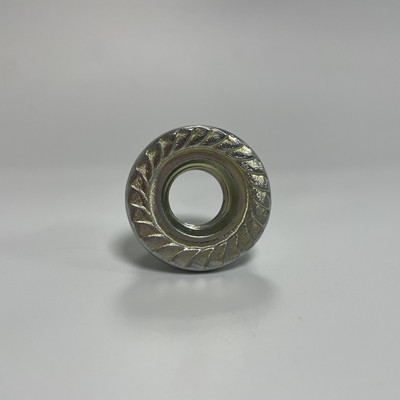caTEGORIES
Tags
How to Accurately Match Nut Size to Bolt Specification?

Posted: April 03, 2025
Categories: News
Tags: news
The corresponding nut size must be matched concerning the bolt specification of the nut that matches it, and it is necessary to fit the nut and bolt and maintain the tension and strength of the bolt connection between the nut and bolt. To do this, we need to make sure the size, diameter, and pitch of the thread of the nut match that of the bolt. It is also important to ensure that the threads of the nut and bolt are clear of debris and undamaged as well.
Why Is Matching Nut Size to Bolt Specifications Crucial?
The Role of Compatibility in Mechanical Integrity
Using the right nut size for a bolt is one of the most important aspects of maintaining mechanical integrity. For a nut and bolt mate to connect, their diameters, thread pitch, and materials must be narrowly specified. This needs to be in alignment, otherwise the structure of machines or any equipment is likely to become unstable. Choosing a nut that is preferably suited to the specification of the bolt, ensures the load is evenly distributed and reduces strain on either component.
When driven by matching fasteners, it gives nothing short of what specifications it was meant to provide under different working conditions. These are often used in a variety of fastening applications and provide corrosion resistance (e.g., BZP). This level of precision is necessary for industries that cannot afford a lapse in safety and reliability.
Consequences of Incorrect Pairing
Risks of Over-Tightening or Under-Tightening
Pairing nuts and bolts incorrectly will cause over-tightening or under-tightening and can create serious problems. Too tight can strip threads or deform parts, and too loose results in the connection coming apart when stressed. In either case, the integrity of the assembly is lost.
Potential Equipment Failures
A mismatch can lead to higher degradation and can cause equipment failures or catastrophic failure. Using a nut with an incompatible thread pitch, for instance, will cause the force to be distributed unevenly, and the bolt may come off during operation. Whether Hexagon Serrated Flange Nuts DIN 6923 or any components for that matter, durability and performance will rely on precision pairing with a compatible bolt.
How Can You Determine the Correct Nut Size for a Bolt?
When figuring out what size nut to use on a bolt, the nut must match the bolt in thread size, diameter, and pitch. This means checking to ensure that the threads of the nut & bolt have no debris and are not damaged. Also, nuts, bolts and washers should be of the type, size and material indicated in the relevant standards. This will maintain the integrity of the connection and help you prevent issues from re-tightening when following these guidelines.
Identifying Bolt Diameter and Thread Pitch
Measuring Bolt Diameter Accurately
To determine the appropriate nut size, start by measuring the bolt’s diameter accurately. Use calipers for precision when assessing the outer diameter of the bolt’s threaded section.
Understanding Thread Pitch and Its Importance
The gap in between threads on a bolt is known as the pitch of that thread. This measurement must be paired with an appropriate nut to make sure that components accurately mate. When thread pitch differs, alignment is not guaranteed and holding power is compromised.
Using Tools to Simplify Measurements
Thread Gauges and Their Applications
Thread gauges are indispensable tools for identifying thread pitch quickly. By matching the gauge teeth with a bolt’s threads, you can determine its exact specifications without guesswork.
The Benefits of Calipers for Precision
Calipers provide exact measurements of both diameter and thread depth. This precision ensures that you select the right nut size, enhancing assembly accuracy and reliability.

What Factors Influence Your Choice of Nut for a Specific Bolt?
Selecting the right nut for a specific bolt depends on a few variables. Nut thread size and diameter and pitch size of the nut must correspond with those of the bolt. Furthermore, the nut should be material-compatible with the bolt material to avoid problems such as galvanic corrosion. Also, to choose a nut in harmony with the stress environment such as exposure to moisture or chemicals, it is to enter the corrosion resistance and strength degree.
Material Compatibility Between Nut and Bolt
Strength Grades and Material Types
When nuts and bolts are paired, the material strength grade is essential. High-strength bolts, for instance, should have equal-grade nuts that can resist the same type of load without breaking down.
Corrosion Resistance Considerations
Another aspect that determines the material to be used is corrosion resistance. Stainless steel nuts have a higher resistance against rust than carbon steel nuts, which makes them suitable for environments that are likely to be exposed to moisture. Stainless steel nuts have better rust resistance than carbon steel nuts and provide a good option, particularly for applications that are subject to moisture exposure.
Environmental Conditions Affecting Performance
Temperature Variations
Fasteners exposed to extreme temperatures need materials that resist expansion or contraction-induced stress. Choosing nuts made from alloys designed for high-temperature applications ensures durability.
Exposure to Chemicals or Moisture
For environments involving chemicals or high humidity levels, opt for nuts with protective coatings like zinc plating or hot-dipped galvanization. These finishes shield against corrosive elements while maintaining performance over time.
How Does QEWIT Help You Find the Perfect Match?
Advanced Tools for Accurate Measurements
QEWIT provides advanced testing facilities like Vision Measurement Projectors and Torsionmeters to ensure fasteners meet precise standards. These tools simplify identifying correct dimensions and material properties essential for reliable assemblies.
Simplified Selection Process with QEWIT Products
With over 30,000 products, QEWIT offers comprehensive solutions tailored to your needs. Their quality assurance processes ensure consistent performance across all products.
Are There Industry Standards to Follow When Pairing Nuts and Bolts?
Use defined standard bolts, nuts, and washers (right code, size, and material). Prevent issues with re-tightening, and ensure that the connection can sustain the required load and environment. To ensure consistent and safe bolted joints it is imperative that these standards are followed.
Commonly Used Standards in Fastener Selection
Metric vs. Imperial Standards
Fasteners are manufactured according to metric or imperial standards depending on regional practices. Ensuring compatibility within these systems avoids mismatches during assembly.
ISO, ANSI, and DIN Guidelines
Industry standards like ISO (International Organization for Standardization), ANSI (American National Standards Institute), and DIN (Deutsches Institut für Normung) offer widely adopted standards for fastener sizes and tolerances. For instance, ISO, ANSI, and DIN standards offer fastener dimensions and tolerances that are internationally recognized by various industries.
What Are Some Practical Tips for Ensuring a Secure Connection?
Proper Techniques for Tightening Nuts on Bolts
Using a torque wrench guarantees uniform tightening across all connections. This tool prevents over-torquing that could damage threads while ensuring optimal clamping force.
Avoid cross-threading by aligning threads before applying torque gradually. Cross-threaded connections compromise strength significantly compared to correctly installed pairs.
Regular Maintenance Checks for Long-Term Reliability
This is because periodic inspections find wear or loosening well ahead of time for prompt corrective action before failure. When old fasteners are getting damaged you have to replace them with options available. Of Course, there are proper specifications of materials associated with fasteners which could show when they stretch their equipment life beyond repair.
FAQs
Q1: How Do I Measure Thread Pitch?
A: Thread gauge tool—compare the pattern on the teeth of the tool with the threads on your bolt till you find an exact match.
Q2: What are some materials that are best for areas with high corrosion?
A: Stainless steel fasteners (or coated carbon steel ones) that are ideal for corrosion resistance in extreme environments.
Q3: What are my reasons for using torque wrenches to install?
A: A torque wrench should be used to prevent over-torquing, which could damage components or equipment, and to ensure that a consistent amount of force is applied to all connections.


